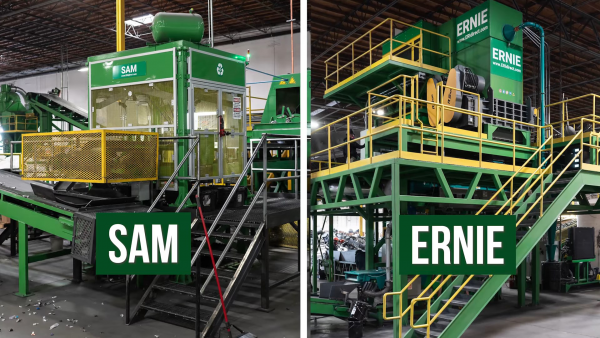
A leader in electronics recycling, ERI Direct is using robotics to change the world of e-waste. There are several reasons ERI is a leader. To start, the company is one of the largest in the world. It is the largest in the U.S. It recycles 300 million pounds of electronics each year in its facilities. E-waste recycling is growing, and ERI keeps coming up with new ways to keep up with the increase.
There’s a problem in the U.S. and around the world. People are using electronics at alarming speeds. As one device becomes outdated, a new one is purchased and old electronics become waste. In 2009, the EPA reported that electronics recycling in the U.S. was not even at 20%. By 2014, around 40% of outdated or broken consumer electronics were being recycled. That was a great improvement.
With more people recycling, certified e-waste recyclers needed to grow. Since 2011, there are 6 times more third-party certified recyclers than there were. More can get recycled, but there are still improvements to be made. One of these improvements involves the use of robotics for e-waste.
How Do You Recycle Electronics?
When cell phones, printers, computers, fax machines, copiers, modems, and so many other electronics stop functioning or outlast their usefulness, they become e-waste. As they contain many components that harm the environment if they’re disposed of in landfills, new methods needed to be used to keep them from the trash. Equally as important is to remember these devices contain sensitive data, and need to be data sanitized.
Some electronics can be repaired and sold or donated as refurbished goods. Other electronics have useful parts like copper wiring or plastic cases that can be reused after melting them down and returning them to their raw form. This helps the environments and finds new life from materials that don’t decompose easily.
Understanding Robotics
When precision is important, industrial robots are gaining in popularity. These automated robots can move multiple directions and are programmed and able to handle routine tasks the same way every time. Humans are prone to off days where hands may not be as steady or the mind wanders. Robots don’t do that. They also don’t get tired or need to take breaks.
That’s not to say that robotics is a perfect system. There can be glitches in the software, but for the most part, robotics is a reliable tool in the industrial world. Industrial robots can get more done in less time.
Why Robotics in E-waste?
When you’re breaking down electronics for recycling, the shredders break the items into small pieces, but then you have a jumble of pieces. You have metals like copper and aluminum mixed with plastic. There are also the circuit boards, batteries, and other components. Each component can be processed back to a raw form and used to make new items. However, hand sorting these different components takes a lot of time.
With artificial intelligence and robotics, around-the-clock sorting is just one benefit. It’s also faster and done with less error. It perfects a system designed to help keep electronics out of landfills. It benefits the environment as more gets recycled.
Doesn’t That Mean They’re Taking Away Jobs
Some people worry that as industrial companies and manufacturers start adding robots, people will lose their jobs. Robots will take over the work humans did. That’s not the case.
By freeing up workers who currently sit and sort the different materials after e-scrap shredding, ERI can move those workers to other important parts of the electronic recycling process.
ERI is starting by adding AI and robotics to its Fresno, California, plant to start. This will make ERI the very first electronics recycling company in the world to use robotics in e-waste. With this initial robotics system in place and working effectively, plans are to expand the technology to other facilities.
At ERI, transparency is important. The company uses Optech™ to help clients keep track of where the devices are in the chain of electronics recycling. Clients can also audit the facilities.